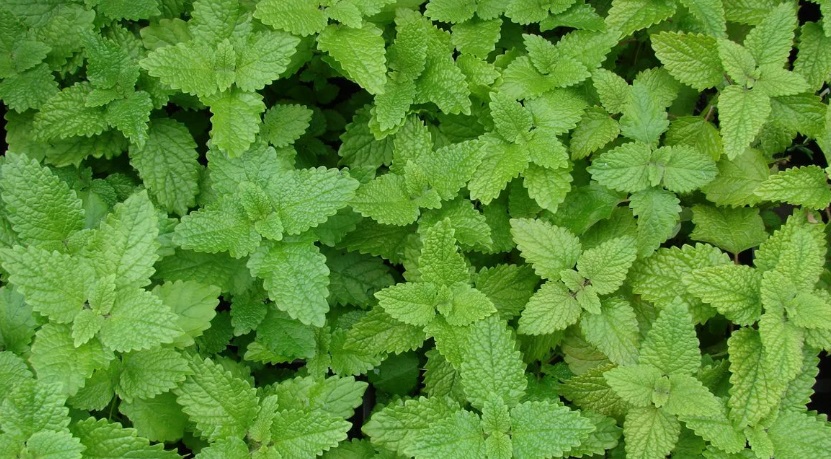Green Pepper: A Burst of Flavor and Health
Green pepper commonly known as a bell pepper, is one of the most versatile and nutritious vegetables found in kitchens around the world. Green Pepper: With its vibrant color, crisp texture, and subtle sweetness, green pepper is not only a culinary favorite but also a powerhouse of health benefits. Green Pepper: But what makes this vegetable so special? Let’s dive into what green peppers are, where they grow, their uses, and the health advantages they bring to the table.
What is Green Pepper and Where Does it Grow?
Green pepper, scientifically named Capsicum annuum, refers to the unripe version of a bell pepper. Bell peppers come in a variety of colors, including red, yellow, orange, and, of course, green. Green peppers are harvested before they mature, which is why they have a more subdued flavor compared to their sweeter, ripened counterparts. They are often referred to as capsicums in some parts of the world.
Green peppers thrive in warm climates and are grown in many countries worldwide. They are native to Central and South America but are now cultivated globally, particularly in regions with plenty of sunlight and a moderate to warm temperature. Countries like the United States, India, Mexico, China, and Spain are some of the leading producers of green peppers. They grow best in rich, well-drained soil and are commonly planted in both home gardens and commercial farms.
Benefits of Green Pepper
Green peppers are a treasure trove of nutrients and offer numerous benefits for the body. The most notable of these can be listed as follows:
-
Rich in Nutrients: Green peppers are low in calories yet packed with essential vitamins and minerals, such as vitamin C, vitamin A, vitamin B6, folate, and potassium. They’re also an excellent source of fiber.
-
Loaded with Antioxidants: These peppers are rich in antioxidants like lutein, beta-carotene, and quercetin, which help combat free radicals and reduce inflammation in the body.
-
Boosts Immunity: High vitamin C content strengthens the immune system, aids in collagen production, and promotes faster wound healing.
-
Good for Eye Health: The presence of vitamin A and carotenoids helps improve vision and reduce the risk of age-related eye diseases.
-
Supports Weight Management: Low in calories and fat, green peppers can be a valuable addition to weight-loss diets. Their high fiber content keeps you feeling full, curbing unhealthy cravings.
-
Improves Cardiovascular Health: Their potassium content helps regulate blood pressure, while the antioxidants reduce the risk of chronic heart conditions.
Where and How Can We Use Green Pepper?
Green peppers are incredibly versatile and work well in a variety of dishes. Whether used fresh, cooked, grilled, or pickled, they add a delightful crunch and a mild flavor profile to meals. Here’s how and where they can be used:
-
In Salads: Raw green peppers bring crispness and vibrancy to salads. Pair them with lettuce, tomatoes, cucumbers, and your favorite dressing for a refreshing dish.
-
In Stir-Fries and Curries: Cut into strips or diced into chunks, they’re perfect for stir-fries, curries, and sautés.
-
Stuffed Peppers: Hollowed-out green peppers can be stuffed with a mix of rice, vegetables, and meats, then baked or roasted for a filling meal.
-
On Pizza and Sandwiches: Thin slices of green peppers make a fantastic topping for pizzas, subs, and wraps, adding both texture and flavor.
-
Soups and Stews: They meld beautifully into soups, stews, and chili for a comforting, nutritious meal.
-
Grilled or Roasted: Green peppers can be grilled or roasted to enhance their natural sweetness and smoky flavors.
-
As a Snack: Pair raw green pepper slices with hummus or dip for a healthy snack.
What are Green Pepper’s Health Cures?
Green peppers not only prevent potential ailments but also help in managing some health conditions. Here are a few ways green peppers can support health cures:
-
Helps Manage Blood Sugar Levels: The low glycemic index of green peppers makes them ideal for individuals managing diabetes. They also regulate insulin levels due to their fiber content.
-
Promotes Digestive Health: The fiber in green peppers aids in digestion, prevents constipation, and supports a healthy gut.
-
Reduces Risk of Anemia: Green peppers are rich in vitamin C, which aids in the absorption of iron from plant-based foods, reducing the likelihood of iron-deficiency anemia.
-
Supports Respiratory Health: Its anti-inflammatory properties and antioxidants can ease breathing issues by reducing inflammation in the respiratory system.
-
Fights Skin Aging: Green peppers are full of antioxidants and vitamin C, which promote collagen production, keeping the skin firm and reducing signs of aging.
-
Improves Mental Health: The combination of B-vitamins, magnesium, and antioxidants works to support brain function and reduce stress.

Unleash the Power of Green Pepper: From Delicious Dishes to Health Booster
Green peppers, also known as bell peppers, are a versatile and vibrant addition to any kitchen. Their slightly bitter, grassy flavor adds a refreshing crispness to a wide array of dishes, and they pack a nutritional punch that can contribute to overall health. Let’s explore the practical culinary applications of this often-overlooked vegetable and uncover its surprising health benefits.
Green Pepper: A Culinary Chameleon
Green peppers are incredibly adaptable and can be incorporated into countless meals. Here are a few practical dish ideas:
Stir-fries: A classic choice! Green peppers add texture and a subtle bite to stir-fries with chicken, beef, tofu, or shrimp. Pair them with other colorful vegetables like onions, carrots, and broccoli for a visually appealing and nutritious meal.
Salads: Sliced or diced green pepper adds a refreshing crunch and a hint of bitterness to salads. They complement leafy greens, tomatoes, cucumbers, and other salad ingredients.
Omelets and Frittatas: Chopped green pepper brings a vibrant color and flavor to breakfast classics. They pair particularly well with onions, mushrooms, and cheese.
Stuffed Peppers: Halved and hollowed green peppers make excellent vessels for stuffing with rice, ground meat, vegetables, and cheese. Bake them until tender for a hearty and satisfying meal.
Pizza Topping: Thinly sliced green pepper adds a slightly bitter counterpoint to the richness of cheese and sauce on pizza.
Soups and Stews: Diced green pepper can be added to soups and stews for added flavor and texture. They work well in tomato-based soups, chili, and vegetable stews.
Fajitas and Tacos: Strips of green pepper are a staple ingredient in fajitas and tacos, offering a satisfying crunch and a slightly sweet flavor when cooked with onions and other vegetables.
Which Dishes Benefit Most from Green Pepper?
Green pepper’s slightly assertive flavor profile shines in dishes that can handle a touch of bitterness. It’s particularly well-suited for:
Dishes that need a textural contrast: Its crispness adds a satisfying crunch to dishes that might otherwise be soft or mushy.
Dishes with rich or heavy flavors: The slight bitterness helps to cut through richness and balance the overall flavor profile.
Dishes where visual appeal is important: The vibrant green color adds visual interest and makes meals more appealing.
The Health Benefits of Green Pepper
Beyond its culinary versatility, green pepper boasts several health benefits:
Rich in Vitamin C: Green peppers are an excellent source of Vitamin C, an antioxidant that helps protect against cell damage, boosts the immune system, and promotes collagen production for healthy skin.
Source of Vitamin A: Vitamin A is essential for healthy vision, immune function, and cell growth.
Fiber Content: Green peppers contain fiber, which aids digestion, promotes satiety, and helps regulate blood sugar levels.
Antioxidants: They contain various antioxidants, including carotenoids and flavonoids, that help fight free radicals and protect against chronic diseases.
Low in Calories: Green peppers are a low-calorie vegetable, making them a great addition to a healthy diet.
Green Pepper and Cold & Flu: A Supporting Role
While no single food can cure a cold or flu, green pepper’s high Vitamin C content can support the immune system and potentially shorten the duration or reduce the severity of symptoms. Vitamin C is known to play a role in immune cell function. Additionally, the antioxidants in green peppers can help reduce inflammation associated with colds and flu.
In Conclusion
Green peppers are more than just a colorful vegetable; they are a versatile culinary ingredient with significant health benefits. From stir-fries and salads to stuffed peppers and pizza toppings, the possibilities are endless. So, embrace the slightly bitter, refreshing flavor of green pepper and enjoy its many culinary and health-boosting properties! Next time you’re planning a meal, consider adding a little green pepper for a vibrant and healthy touch.
Conclusion
Green peppers are more than just a colorful addition to your plate – they’re a source of essential nutrients and offer a myriad of health benefits. Cultivated in warm climates worldwide, they are a staple ingredient in cuisines globally, from fresh salads to savory main dishes. Their ability to support immunity, boost metabolism, and improve eye and skin health makes them a valuable addition to a balanced diet. So next time you’re at the grocery store, grab a few green peppers and get creative in the kitchen – your body will thank you! Green Pepper:
You can read below writings
what is green tea and where does it grow
Guide to Black Tea: Origins, Benefits, Uses
Nature’s Calming and Healing Wonder Linden





